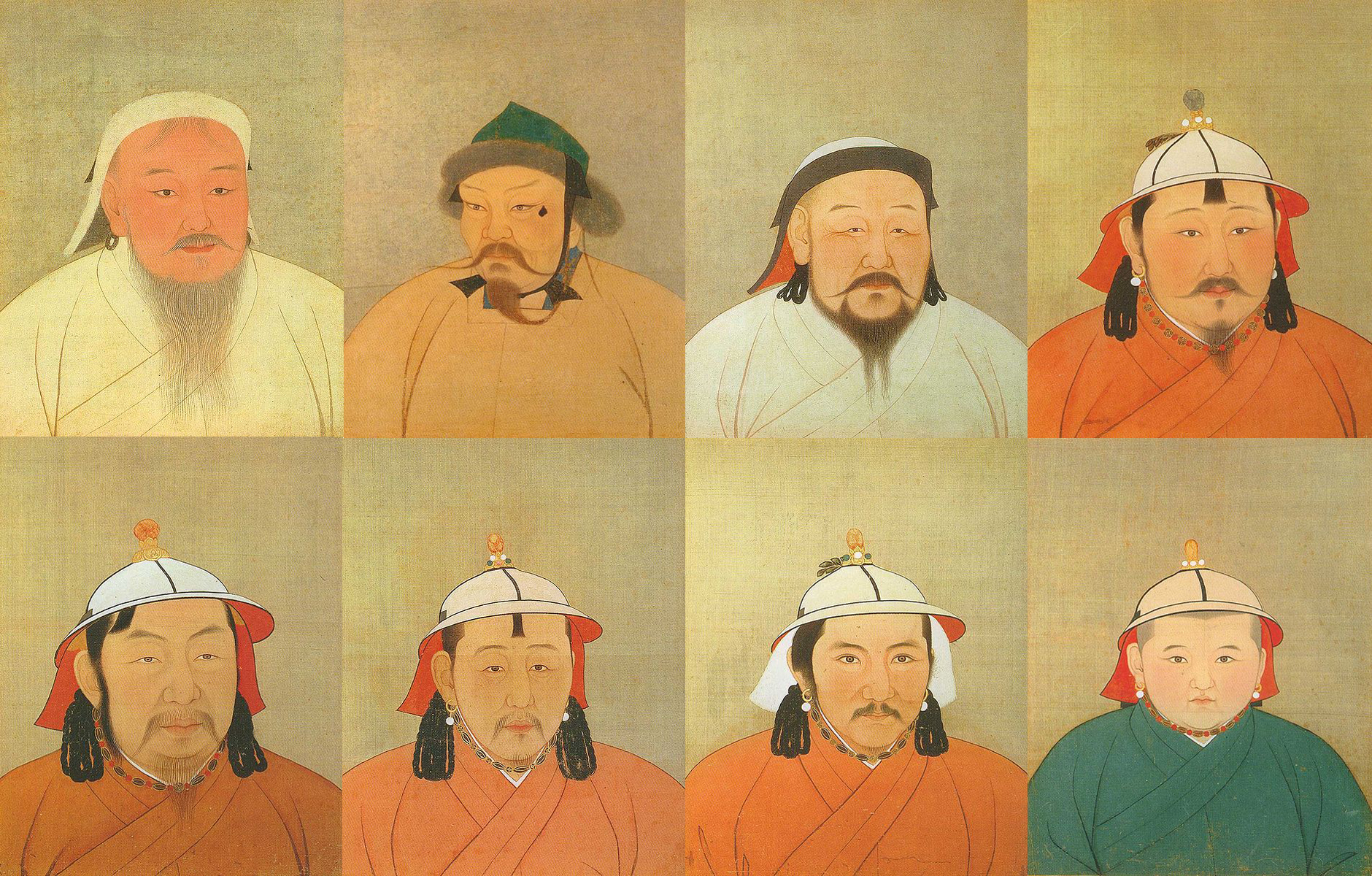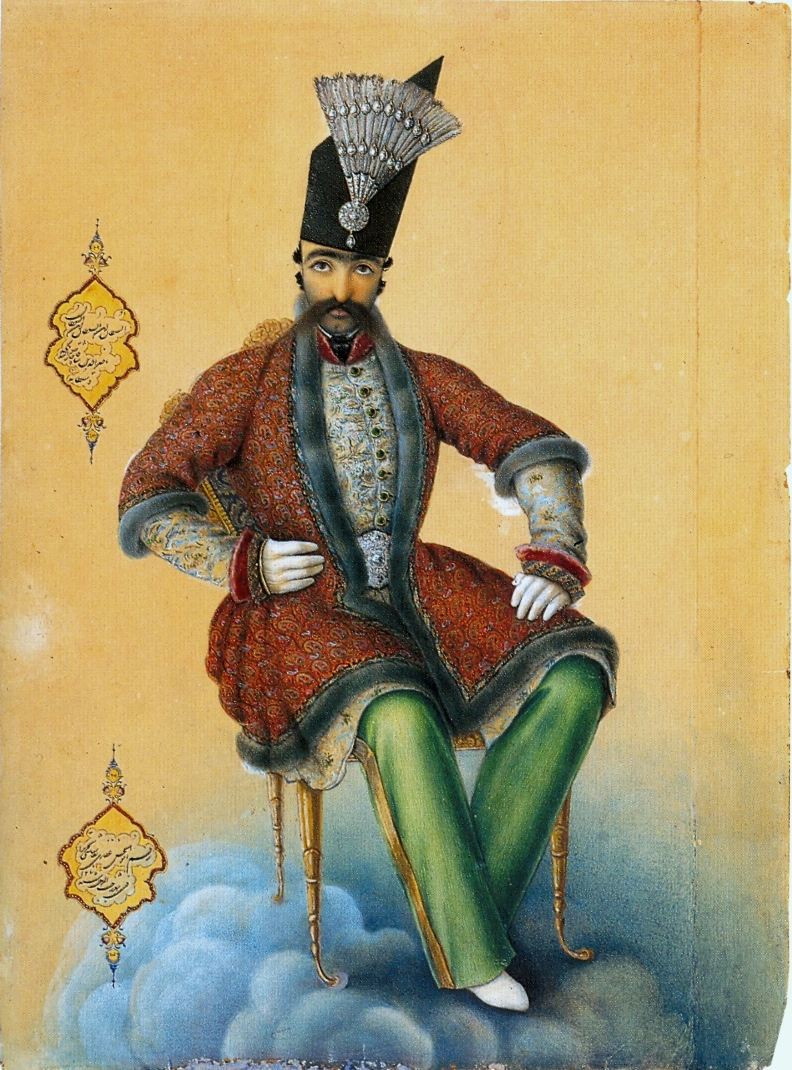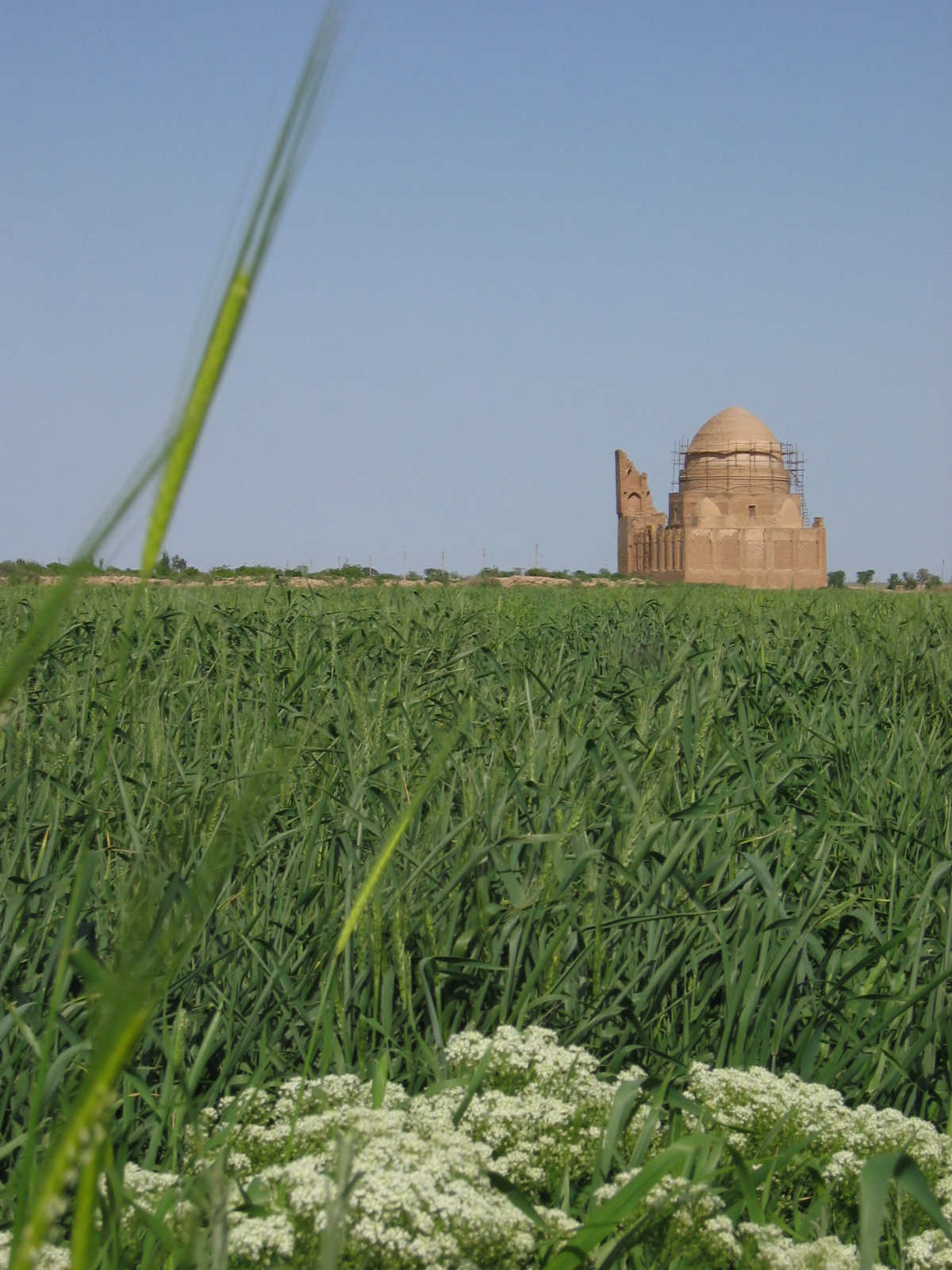|
Revolt Of Hasan Khan Salar
The Revolt of Hasan Khan Salar ''()'' was a revolt that occurred in Khorasan Province, Khorasan from 1846 to 1850. It began as a result of the power struggle in the Qajar Iran, Qajar court. One of the factions manifested itself in Khorasan by Hasan Khan Salar. Salar's revolt sought to promote Bahman Mirza Qajar, Bahman Mirza and his claim to power. The first half of his revolt started in 1846 and was initially very successful, gaining the support of rebellious Turkmen tribes and the Kurds of Khorasan, Shadlu Kurds who had long hated Qajar rule. However, Salar was defeated at Meyami, Mayamey near Bastam, Bistam in August 1847 and was forced to flee first to Ahal Region, Akhal and then later to Sarakhs, Serakhs. This ended the first part of the rebellion. However, with the death of Mohammad Shah Qajar on 4 September 1848, Salar was able to capture Mashhad with the support of the population and then extended his control over most of Khorasan. With the ascension of Naser al-Din Shah Q ... [...More Info...] [...Related Items...] OR: [Wikipedia] [Google] [Baidu] |
Khorasan Province
Khorasan ( ; also transcribed as Khurasan, Xorasan and Khorassan), also called Traxiane during Hellenistic and Parthian Empire, Parthian times, was a Provinces of Iran, province in northeastern Iran until September 2004, when it was divided into three new provinces: North Khorasan, South Khorasan, and Razavi Khorasan. Khorasan historically referred to a much larger area, comprising the east and the northeast of the Persian Empire. The name ''Khorāsān'' is Persian language, Persian and means "where the sun arrives from". The name was first given to the eastern province of Persian Empire, Persia during the Sasanian Empire and was used from the Late Middle Ages in distinction to neighbouring Transoxiana.Svat Soucek''A History of Inner Asia'' Cambridge University, Cambridge University Press, 2000, p.4C. Edmund Bosworth, (2002)'CENTRAL ASIA iv. In the Islamic Period up to the Mongols'''Encyclopaedia Iranica'' (online)C. Edmund Bosworth, (2011)'MĀ WARĀʾ AL-NAHR'''Encyclopaedia I ... [...More Info...] [...Related Items...] OR: [Wikipedia] [Google] [Baidu] |
Hasan Khan Salar
Hasan Khan Salar (Persian language, Persian: حسن خان سالار, died 1850) was a Qajar Iran, Qajar prince most notable for Revolt of Hasan Khan Salar, his rebellion and support for Bahman Mirza Qajar's claim on the Iranian throne. He was the fifth son of the Qajar chief minister Asef al-Dowleh, Allahyar Khan Asef ad-Dowleh and the oldest son of Maryam Khanom, the fifth daughter of Fath-Ali Shah Qajar, and therefore, was a cousin of the incumbent Shah of his time, Mohammad Shah Qajar. Rise to power Hasan Khan Salar rose to power after his father Allahyar Khan Asef ad-Dowleh, former governor of the Khorasan province, was exiled for rebellion. Rebellion During his time as the governor of Khorasan, Salar supported Bahman Mirza Qajar for the throne of Iran, and took up arms against Mohammad Shah Qajar and later his son, Naser al-Din Shah Qajar, starting a rebellion that would last from 1846 to 1850. His revolt was eventually defeated during the prime ministry of Amir Kabir. ... [...More Info...] [...Related Items...] OR: [Wikipedia] [Google] [Baidu] |
Kalat-e Naderi
Kalat-e Naderi () is a massive natural fortress located about 44 miles north of Sousia, in Kalat County, Razavi Khorasan Province, Iran. It is essentially a massive plateau about four miles in circumference that has been used as a fortress since before the Achaemenid era. It is surrounded on three sides by high cliff walls ranging from 1500 feet on the south side to 2000 feet on the west side with lower eastern walls and a gently sloping plain leading up to the heights from the north. It is famous as the only fortress ever to withstand a siege by Tamerlane. Alexander the Great's army laid siege to it. While Alexander left to deal with a rebellious Persian chieftain, he ordered Craterus to command the majority of the army and take the fortress. Some of the first European travellers to travel there include Sir John McNeill and Colonel Beake (brother of Charles Tilstone Beke). It was more fully described by William Gill, after his expedition with Valentine Baker in 1873 ... [...More Info...] [...Related Items...] OR: [Wikipedia] [Google] [Baidu] |
Fath-Ali Shah Qajar
Fath-Ali Shah Qajar (; 5 August 1772 – 24 October 1834) was the second Shah of Qajar Iran. He reigned from 17 June 1797 until his death on 24 October 1834. His reign saw the irrevocable ceding of Iran's northern territories in the Caucasus, comprising what is nowadays Georgia (country), Georgia, Dagestan, Azerbaijan, and Armenia, to the Russian Empire following the Russo-Persian Wars of Russo-Persian War (1804–1813), 1804–1813 and Russo-Persian War (1826–1828), 1826–1828 and the resulting treaties of Treaty of Gulistan, Gulistan and Treaty of Turkmenchay, Turkmenchay., page 728 These two treaties are closely tied to Fath-Ali Shah's legacy amongst Iranians, who often view him as a weak ruler. Fath-Ali Shah successfully reconstituted his realm from a mostly Turkic tribal khanship into a centralized and stable monarchy based on the old imperial design. At the end of his reign, his difficult economic problems and military and technological liabilities took Iran to the verge ... [...More Info...] [...Related Items...] OR: [Wikipedia] [Google] [Baidu] |
Khagan
Khagan or Qaghan (Middle Mongol:; or ''Khagan''; ) or zh, c=大汗, p=Dàhán; ''Khāqān'', alternatively spelled Kağan, Kagan, Khaghan, Kaghan, Khakan, Khakhan, Khaqan, Xagahn, Qaghan, Chagan, Қан, or Kha'an is a title of empire, imperial rank in Turkic languages, Turkic, Mongolic languages, Mongolic, and some other languages, equal to the status of emperor and someone who rules a khaganate (empire). The female equivalent is Khatun. It may also be translated as "Khan (title), Khan of Khans", equivalent to King of Kings. In Bulgarian, the title became known as ''Khan'', while in modern Turkic, the title became ''Khaan'' with the ''g'' sound becoming almost silent or non-existent; the ''ğ'' in modern Turkish language, Turkish ''Kağan'' is also silent. After the division of the Mongol Empire, monarchs of the Yuan dynasty and the Northern Yuan held the title of ''Khagan''. ''Kağan, Hakan'' and ''Kaan'', Turkish language, Turkish equivalents of the title are common Tur ... [...More Info...] [...Related Items...] OR: [Wikipedia] [Google] [Baidu] |
Haji Mirza Aqasi
Haji Mirza Abbas Iravani (), better known by his title of Aqasi (; also spelled Aghasi), was an Qajar Iran, Iranian politician who served as the grand vizier of the third Qajar dynasty, Qajar shah, Mohammad Shah Qajar () from 1835 to 1848. Early life Abbas was born in in Yerevan, Iravan (Yerevan), a city located in the Erivan Khanate, Iravan Khanate, a khanate (i.e. province) located in the northwestern part of Qajar Iran. He was a son of Moslem ibn Abbas, a wealthy landowner, and a member of the Bayat (tribe), Bayat clan. During his youth, Abbas spent his time with his father in the holy Shi'ite sites in Ottoman Iraq, where he was tutored by the Ni'matullāhī, Ne'matallahi Sufi teacher Molla 'Abd-al-Samad. There he stayed until 1802, when Molla 'Abd-al-Samad was killed during the Wahhabi sack of Karbala. For a period, Abbas embraced the life of a homeless dervish and made pilgrimage to Mecca, until he finally returned to his hometown, where reportedly served as a clerk to the A ... [...More Info...] [...Related Items...] OR: [Wikipedia] [Google] [Baidu] |
Asef Al-Dowleh
Allahyar Khan Devellu-Qajar Asef al-Dowleh () was the prime minister of Qajar Iran, Iran under Fath-Ali Shah Qajar () from 1824 to 1828. Asef al-Dowleh was a hardline proponent of intensifying the Russo-Persian War (1826–1828), Russo-Iranian War of 1826–1828, performed ineffectively on the battlefield, and was among the first to evacuate to the city of Tabriz. When the Russians captured Tabriz without an opposition, he was in charge of the men in the city's fortress. He was as a result placed under detention in his own house, and after being freed, so deeply outraged was Fath-Ali Shah at Asef al-Dowleh's conduct that he ordered that Asef al-Dowleh be publicly flogged for his "cowardly behavior". Asef al-Dowleh played a key role in inciting the population to oppose the Russian diplomat Alexander Griboyedov, which led to the massacre at the Russian Embassy in Tehran in 1829. Background Asef al-Dowleh was the eldest son of Mohammad Khan Devellu-Qajar (also known as Rokn al-Dowl ... [...More Info...] [...Related Items...] OR: [Wikipedia] [Google] [Baidu] |
Naser Al-Din Shah Qajar
Naser al-Din Shah Qajar (; ; 17 July 1831 – 1 May 1896) was the fourth Shah of Qajar Iran from 5 September 1848 to 1 May 1896 when he was assassinated. During his rule there was internal pressure from the people of Iran, as well as external pressure from the British empire and the Russian empire. He granted many concessions, most importantly the Reuter concession and the Tobacco concession. He allowed the establishment of newspapers in the country and made use of modern forms of technology such as telegraph, photography and also planned concessions for railways and irrigation works. Despite his modernizing reforms on education, his tax reforms were abused by people in power, and the government was viewed as corrupt and unable to protect commoners from abuse by the upper classes which led to increasing anti-governmental sentiments. He was assassinated when visiting a shrine in Rayy near Tehran. He was the first modern Iranian monarch who formally visited Europe and wrote of ... [...More Info...] [...Related Items...] OR: [Wikipedia] [Google] [Baidu] |
Sarakhs
Sarakhs () is a city in the Central District (Sarakhs County), Central District of Sarakhs County, Razavi Khorasan province, Razavi Khorasan province, Iran, serving as capital of both the county and the district. Sarakhs was once a stopping point along the Silk Road, and in its 11th century heyday had many libraries. Much of the original city site is now just across the border at Serakhs in Turkmenistan. History Pre-Islamic Sarakhs lies in the historical region of Greater Khorasan, an area that was significant under Parthian Empire, Parthian and Sasanian Empire, Sassanian rule. According to Ferdowsi's Shahnameh the town has existed since the Afrasiab period and was named for its builder, Sarakhs, son of Godarz, by Keykavus.The surrounding oasis has been inhabited since 2nd millennium BCE and Turkmen historians consider the city to have been founded in 507 BCE. Although this is considered to be a somewhat arbitrary choice of date, the section of the city called Sarahs that' ... [...More Info...] [...Related Items...] OR: [Wikipedia] [Google] [Baidu] |
Ahal Region
Ahal Region (; from , also ) is one of five regions of Turkmenistan, provinces of Turkmenistan. It is in the south-center of the country, bordering Iran and Afghanistan along the Kopet Dag, Kopet Dag Range. Its area is and population 886,845 (2022 census).''Statistical Yearbook of Turkmenistan 2000–2004'', National Institute of State Statistics and Information of Turkmenistan, Ashgabat, 2005. Overview In 2000, Ahal Region accounted for 14% of Turkmenistan's population, 11% of the total number of employed, 23% of agricultural production (by value), and 31% of the country's total industrial production. Ahal's agriculture is irrigated by the Karakum Canal, which stretches all the way across the province from east to west, tracking Turkmenistan's southern border. Another water source is the Hari (Afghanistan), Tejen River, which flows north from Afghanistan in the southeast corner of the province, passing through two large reservoirs south of the city of Tejen. Ahal is known for ... [...More Info...] [...Related Items...] OR: [Wikipedia] [Google] [Baidu] |
Bastam
Bastam () is a city in, and the capital of, Bastam District of Shahrud County, Semnan province, Iran. History Bastam was founded in the 6th century in the Greater Khorasan. It is north of Shahrud. The town is known for its Islamic monuments from the Ilkhanid period and its association with the mystic Bayazid Bastami. The Alborz are to the north of the town. The 19th-century poet, Abbas Foroughi Bastami, lived in Bastam for a time and thence acquired its name as his own. The early Bábí leader and martyr Mullá ʻAlíy-i-Bastámí was also raised in Bastam, and was a significant figure in the Shaykhi movement and later became the first person known to have died for their allegiance to Bábism. A tradition says that the town was founded by Vistahm, uncle of the Sasanian king Khosrau II. The historical town of Bastam embraces the holy shrine of Mohammad Ibn Jafar Sadegh (AS), Bayazid Bastami tomb, Bayazid Monastery, Bayazid Mosque, Eljaito Iwan, Ghazan Dome, Jame Mosq ... [...More Info...] [...Related Items...] OR: [Wikipedia] [Google] [Baidu] |
Meyami
Miami () is a city in the Central District of Meyami County, Semnan province, Iran, serving as capital of both the county and the district. It was the administrative center for Meyami Rural District until its capital was transferred to the village of Ebrahimabad-e Olya. Demographics Population At the time of the 2006 National Census, the city's population was 4,057 in 1,116 households, when it was capital of the former Meyami District of Shahrud County Shahrud County () is in Semnan Province, Iran. Its capital is the city of Shahrud. History After the 2011 National Census, the village of Ruyan was elevated to city status as Rudiyan, and was renamed Ruyan again in 2021. After the 2016 .... The following census in 2011 counted 4,562 people in 1,340 households. The 2016 census measured the population of the city as 4,566 people in 1,431 households, by which time the city and the rural district had been transferred to the Central District, with Meyami as the cou ... [...More Info...] [...Related Items...] OR: [Wikipedia] [Google] [Baidu] |






